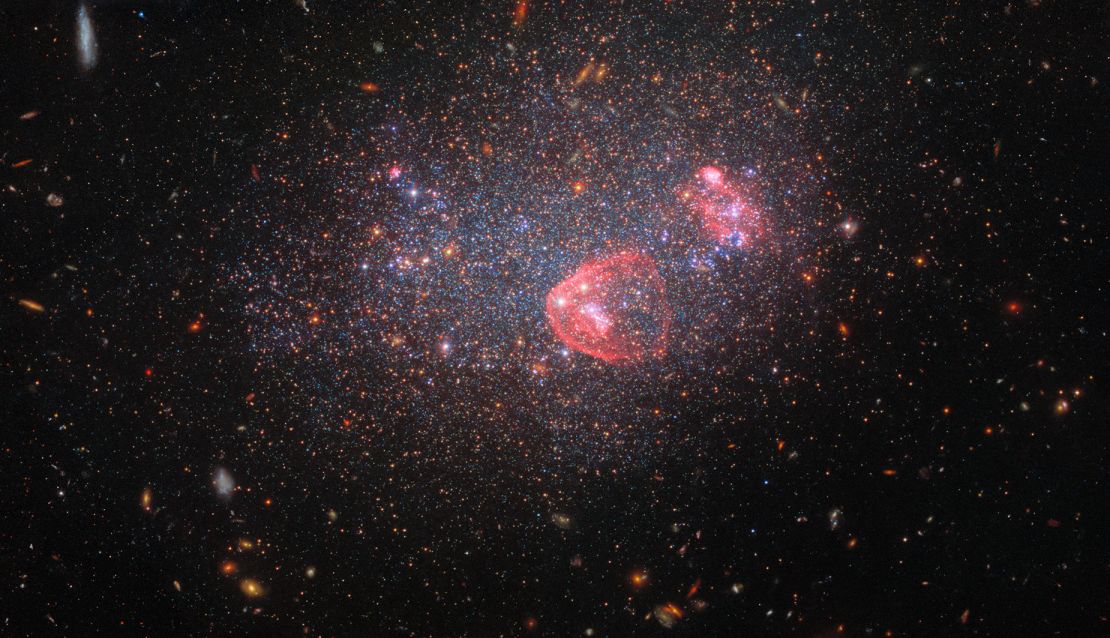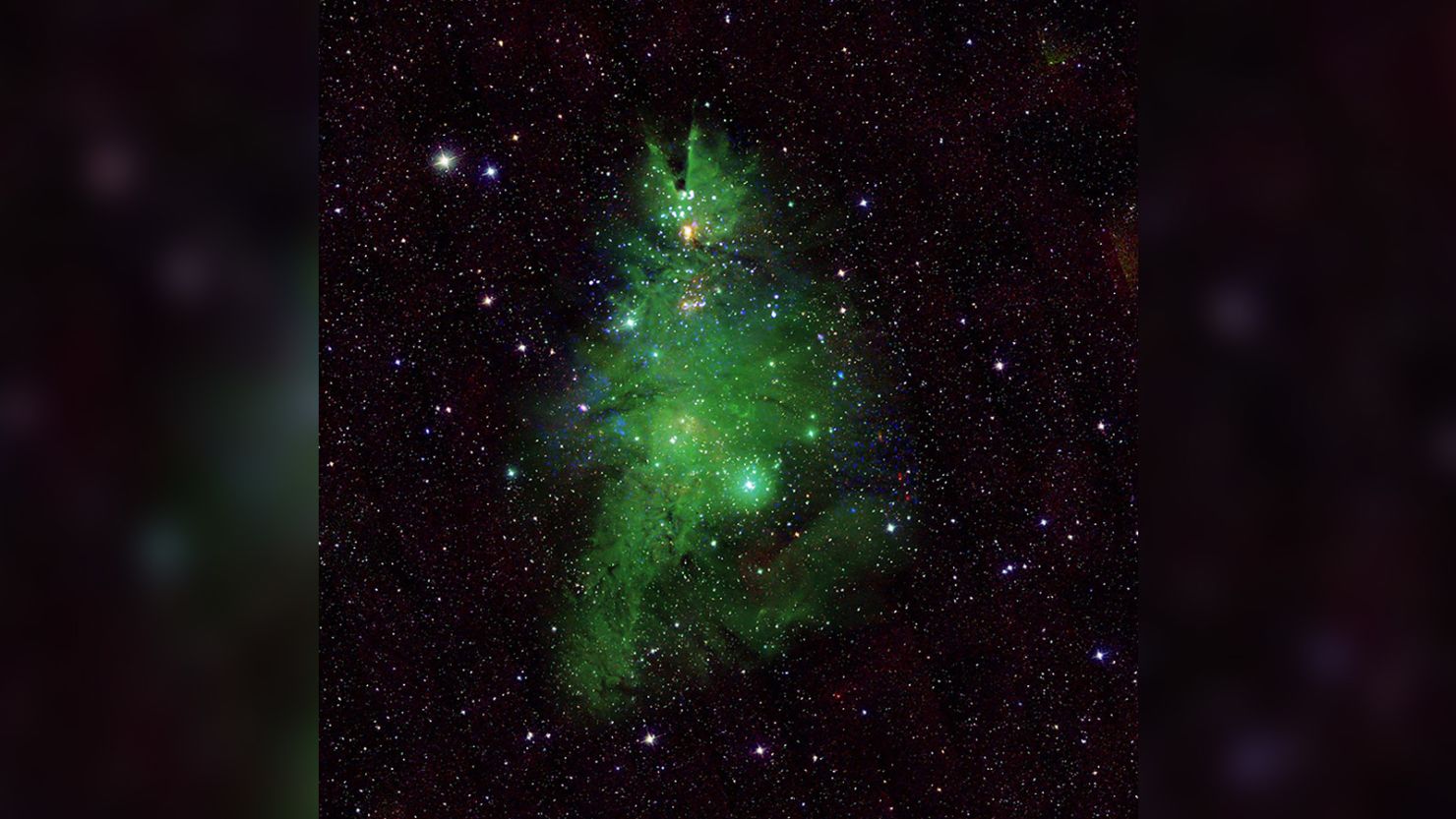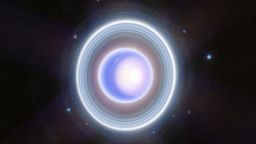Sign up for CNN’s Wonder Theory science newsletter. Explore the universe with news on fascinating discoveries, scientific advancements and more.
New images captured by two of NASA’s space telescopes showcase how the light from young stars can deck the cosmos with holiday cheer.
Groupings of stars resembling a Christmas tree aglow with lights and a scintillating snow globe shine in new observations taken by the Chandra X-ray Observatory and the Hubble Space Telescope, respectively.
NGC 2264, which is about 2,500 light-years from Earth, is also called the “Christmas Tree Cluster,” where a group of young stars surrounded by the gaseous cloud of a nebula call to mind a cosmic evergreen decorated with twinkling lights.
The stars are between 1 million and 5 million years old, and vary in size — some are smaller and some larger than our sun. The new composite image, rotated clockwise by 160 degrees so that the top of the tree is upright, includes different wavelengths of light detected by Chandra as well as ground-based surveys.
In an animated version of the image, blinking blue and white lights represent the X-ray light from young stars detected by Chandra. Meanwhile, the cloud of gas resembling the festive tree glows in green optical light, as seen with the National Science Foundation’s WIYN 0.9-meter telescope on Kitt Peak in the Arizona-Sonoran Desert.
White stars gleaming throughout the image were revealed by observations in infrared light with the Two Micron All Sky Survey, which operated between 1997 and 2001. Studying young stars such as those within the Christmas Tree Cluster offers insight into their volatile nature. Young stars can release strong flares more powerful than those of our sun, and astronomers are still investigating the phenomena.
A starry snow globe
The Hubble Space Telescope had to search a little farther to find a celestial winter wonderland. Hubble observed the billion stars that sparkle within a dwarf galaxy named UGC 8091, which is 7 million light-years from Earth in the Virgo constellation.
The galactic arrangement of the stars looks a bit like hopelessly tangled strings of lights that were hastily put away at the end of a holiday season. The disorder is a result of UGC 8091 being an irregular galaxy that lacks the structured appearance of a spiral or elliptical galaxy.

No two irregular galaxies look the same, and they appear in a range of sizes and shapes. An irregular galaxy’s shape can be the result of interactions with other galaxies, as well as internal turbulence caused by celestial objects such as exploding stars.
Hubble’s Wide Field Camera 3 and the Advanced Camera for Surveys observed UGC 8091 in different wavelengths of light. The data was collected between 2006 and 2021.
The blue light revealed in a composite image from these observations comes from newborn stars, while the glowing pink-red splotches may be hydrogen molecules that have heated after interacting with the light from the young, energetic stars. Meanwhile, other gleaming features in the image include older stars and distant background galaxies.
Dwarf galaxies were common early in the history of the universe and eventually merged to create larger, more structured galaxies. Astronomers can learn about galactic evolution by studying distant dwarf galaxies and their stars.







